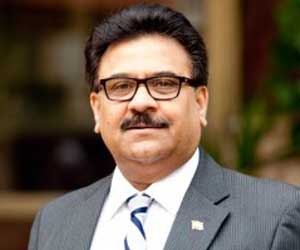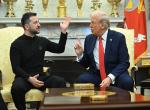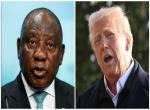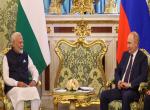The idea of the intercontinental Brazil, Russia, India, China, or BRIC emerging economies as a power house of global growth engine was received over a decade ago with suspicion, consternation and anticipation. Later, this year’s host of the Summit – South Africa – had joined to take the foot print of BRICS (‘S’ for South Africa) to the African continent. The combined GDP growth in dollar terms of the original quartet actually exceeded what was anticipated by Goldman Sachs in 2001. In fact, the founder of the acronym, Jim O’ Neil, in a recent interview stuck to his position and stated that “The relative and absolute position of the BRICS, except Russia, is as close to as I had envisioned”.
All economies have not done that well. Russia suffered due to ongoing sanctions while Brazil and South African economies have faced their own challenges. India and China have maintained sound growth rates of 6-7 percent or even more, despite the international market challenges, protectionism, trade wars and demand supply imbalances. Although one may come across the criticism that the BRICS has lagged on expectations and real outcomes, but it is like focussing only on ‘half the glass being empty’. Much more has been achieved, making the Group an object of continued curiosity. Many other countries are lining up to join BRICS when others like EU are facing exit pains and G 7 seems to have turned into G 6+1.
Before we discuss the 10th BRICS Summit, it will be reasonable to quote a recent article in the Economist which infers that the compliance on the commitments undertaken by the members is assessed before each Summit, and that BRICS commitment compliance is as good as that of G 7, at about 77 percent. This is quite extraordinary given the fact that the five-member organisation is just into its decade plus existence. South Africa having joined only in 2011, remains the lowest on the compliance ladder while China leads by keeping its words the most.
One of the outstanding achievements has been the detailed statement or declaration of intent of each Summit, starting with Yekaterinburg in 2009 listing barely 15 commitments. The last Summit Statement in Xiamen had 71 paragraphs with over 120 ideas and promises. The 10th Summit in Johannesburg from July 25-27 surpasses them all by having 102 paragraphs – the longest ever outcome document. While the real crux and actionable points will still be mulled over, it is a given that the BRICS leaders have an all encompassing global agenda that could enable it to emerge as a “geopolitical counterweight”. Critics would of course term it as verbosity par excellence.
The leaders of Brazil, Russia, India , China and South Africa met for the 10th Summit in Johannesburg amidst the global uncertainty, insecurity and increasing protectionism and unilateralism, especially by the sole hyper power adopting a disruptionist approach to challenge the existing international order and institutions. Not that the five countries do not have their own eggs to hatch but the fact that their differing approaches have found synergy and common interests to strengthen the alliance. Under the rubric of the BRICS member countries have been able to scotch their differences. The Doklam standoff between India and China is a case in point where a substantive resolution “ Wuhan spirit of cooperation”, before the 9th BRICS Summit, was found and is working well. Moreover, the Summits provide great opportunities also for the bilateral formal and informal interactions between the leaders which helps reinforce the global good though highest level of diplomatic engagement.
The 102 paragraphs of the Johannesburg Declaration entitled, “BRICS in Africa: Collaboration for Inclusive Growth and Shared Prosperity in the 4th Industrial Revolution”, in itself quite telling and symptomatic of history, present and future. Several specific commitments were made, i.e. to establish an energy research platform, and the leaders supported the agricultural platform initiated by India in 2016. The host’s proposals for a new working group on tourism and a vaccine research centre (to be based in South Africa) were favourably received by the other governments. In line with the meeting’s thematic focus on digitalisation, leaders also accepted the host’s suggestion to form a “Partnership on the New Industrial Revolution” for knowledge sharing and common activities. It was also agreed to set up regional centres of the most successful initiative, the New Development Bank (NDB), in order to finance projects across the partner countries as well as for non-members. However, two key elements of the South African agenda for establishing of a working group on peacekeeping and a Women’s Forum remain under discussion. India’s proposal to establish a BRICS credit rating agency is still in the works.
Over the years, BRICS have expanded its various interactive mechanisms and dialogue formats with non-state actors that include the Think-Tank Council, Academic Forum, Civil BRICS Forum, Young Diplomats Forum, Youth Summit and Young Scientists Forum. An announcement was also made about the 3rd BRICS Seminar on governance 2019, in Brazil, “with greater and more diverse participation of academia and think tanks”. These activities not only disseminate the right message but help create a gen-next critical mass of stakeholders.
This Summit was also a continuation of BRICS Plus format where apart from heads of various international and regional organisations, South Africa extended invites to the Turkish President Erdogan in his capacity as the Organisation of Islamic Cooperation (OIC) Chair as well as leaders from Argentina (G 20 Chair), Indonesia, Jamaica and Egypt. A total of 21 leaders attended the Summit. South Africa also focussed on “BRICS-Africa Outreach” to assure developing countries, especially in the African continent, of their continued commitment to provide developmental and project assistance through the Regional Centre of NDB. The leaders also reiterated their support for African Union (AU) Agenda for 2063 and African Continental Free Trade Agreement, but the exact linking mechanisms to fructify cooperation will have to be devised. Frustrated by the West and hoping for the leadership of Islamic World, President Erdogan suggested to the leaders of the BRICS countries to add a ‘T’ to their acronym. There are others in the pipe line too. In keeping with his astute policy and the Summit theme, the Chinese President called for expanding ‘BRICS plus’ cooperation to address common challenges, protect multilateral trade, build an open world economy, and strengthen the voice of emerging market economies and developing countries.
Leaders also underscored the importance of multi-lateralism based on international law while highlighting the importance and central role of the World Trade Organisation (WTO) and Climate Change Agreement as well as the UN Reforms stating, “We reinforce our commitment to upholding multilateralism and to working together on the implementation of the 2030 Sustainable Development Goals as we foster a more representative, democratic, equitable, fair and just international political and economic order”. In fact the word ‘Multilateralism’ figured 23 times in the Declaration. On the question of UN Reforms, the two countries that had ambivalent positions on the UN Security Council seat claims of one or the other, stated explicitly that “China and Russia reiterate the importance they attach to the status and role of Brazil, India and South Africa in international affairs and support their aspiration to play a greater role in the UN.” Whether in reality their position will take a proactive stance remains to be seen. Although on India’s insistence, four paragraphs on countering terrorism were added in the Declaration - unlike the last Summit specific Pakistani terrorist groups were not named. The reason for the same is unclear as reiterating it would not have harmed the cause.
BRICS no doubt has emerged stronger with greater cohesion and alternative model of development in the context of South-South cooperation. But it has to continue to strengthen and empower the institutional arrangements to complete the assigned tasks effectively. At the same time, it will have to sooner or later confront and assimilate the individual countrys’ efforts and mechanisms for developmental assistance and capacity building into a collaborative and sustainable model. This could be done by pooling of resources by major countries, especially India and China, rather than competing for space through the dollar fist. Same applies to the Chinese Belt and Road Initiative and India-led Asia Africa Growth Corridor where the exclusivity of the key driver (i.e. China or India) has to be turned into an inclusive matrix of development by addressing legitimate concerns.
Meanwhile, both the countries continue to follow their bilateral tracks which was evident during PM Modi’s and President Xi Jinping’s visits to the continent immediately before the BRICS Summit. When differences of opinion and approaches between India and China persist, BRICS Plus and expansion through new members have to be calibrated and fine-tuned to avoid making these any more dissonant.
For the time being, the copious Johannesburg Declaration has provided a lot of homework to do for the member states for the next “Golden Decade” when 4th Industrial Revolution will demand more concerted efforts through extensive innovation and AI (artificial intelligence) oriented human resources across the BRICS landmass of over 3 billion people.
Image Source: https://upload.wikimedia.org/wikipedia/commons/thumb/5/50/2018_BRICS_summit_%286%29.jpg/1200px-2018_BRICS_summit_%286%29.jpg

.jpg)









Post new comment